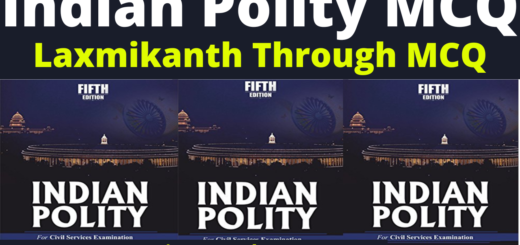Introduction to the Indian Constitution
The Indian Constitution is a comprehensive and intricate document that serves as the supreme law of India. It lays down the framework that demarcates the fundamental political code, structure, procedures, powers, and duties of government institutions and sets out fundamental rights, directive principles, and the duties of citizens. Here is an introduction to the Indian Constitution tailored for UPSC IAS exam preparation:
Introduction to the Indian Constitution
Historical Context
The Constitution of India was adopted by the Constituent Assembly on 26th November 1949 and came into effect on 26th January 1950. It replaced the Government of India Act 1935 as the country’s fundamental governing document, marking the transition of India from a British Dominion to a Republic.
Structure and Features
The Indian Constitution is the longest written constitution of any sovereign country in the world. Originally, it consisted of 395 articles in 22 parts and 8 schedules. After several amendments, it now comprises 448 articles in 25 parts and 12 schedules.
Preamble
The Preamble to the Indian Constitution is a brief introductory statement that sets out the guiding principles and philosophy of the Constitution. It declares India to be a “Sovereign Socialist Secular Democratic Republic” and aims to secure justice, liberty, equality, and fraternity for its citizens.
Salient Features
- Lengthiest Written Constitution: The Indian Constitution is the most detailed constitution in the world.
- Blend of Rigidity and Flexibility: It can be amended by the Parliament, but certain provisions require a special majority.
- Federal System with Unitary Features: It establishes a federal structure with a strong central government.
- Parliamentary Form of Government: It provides for a parliamentary system where the executive is responsible to the legislature.
- Independent Judiciary: The judiciary is independent of the executive and the legislature.
- Single Citizenship: Unlike other federal countries, India has a single citizenship for all its citizens.
- Emergency Provisions: The Constitution provides for the declaration of emergency in certain situations, which centralizes power.
Basic Structure Doctrine
The Supreme Court of India, in the landmark Kesavananda Bharati case (1973), propounded the Basic Structure Doctrine, which holds that certain fundamental features of the Constitution cannot be altered by any amendment. This includes the supremacy of the Constitution, the rule of law, the principle of separation of powers, and the objectives stated in the Preamble.
Sources of the Constitution
The Indian Constitution has borrowed features from various other constitutions around the world, including:
- British Constitution: Parliamentary system of government.
- US Constitution: Fundamental rights and judicial review.
- Canadian Constitution: Federal system with a strong central government.
- Irish Constitution: Directive Principles of State Policy.
- French Constitution: Ideals of liberty, equality, and fraternity.
Amendments
The Constitution has been amended multiple times to address various issues and to reflect the changing needs of the society. Notable amendments include the 42nd Amendment, known as the “Mini Constitution,” which brought about significant changes during the Emergency in 1976.
Conclusion
The Indian Constitution is a living document that has evolved over time through amendments and judicial interpretations. It embodies the aspirations and values of the Indian people and provides a robust framework for governance and the protection of fundamental rights.














